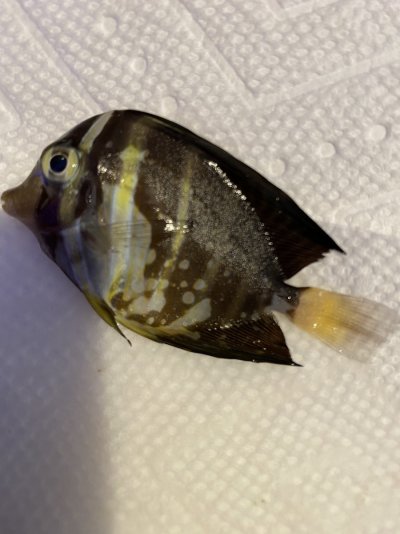- Joined
- Nov 12, 2019
- Messages
- 314
- Reaction score
- 411
Need some help figuring out what got my sailfin tang. Day before yesterday it was fine. Eating swimming, doing it’s normal thing. Expanding fin. Happy fish basically. Yesterday it spent its entire day on the sand bed. Barely swimming. No noticeable marks on skin anywhere. I pulled it and put it into a acclimation box hanging on the tank. Within 24 hours dead.
Parameters checked out just fine in the tank with sera test kits. 4 other fish in the tank acting totally fine as of now as well.
these spots only appeared on the fish after death when I check on it this morning.

Parameters checked out just fine in the tank with sera test kits. 4 other fish in the tank acting totally fine as of now as well.
these spots only appeared on the fish after death when I check on it this morning.
















